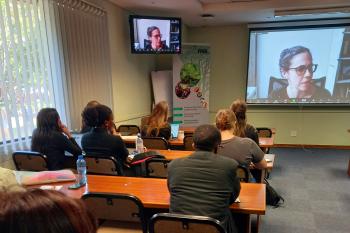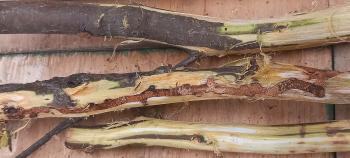African Fungus Day 2024
Thursday 23 May at 10h00
African Fungus Day, observed on 25 May, sheds light on the crucial role fungi play in African ecosystems and societies. Recognizing the significance of this date, mycologists in Africa designated it as African Fungus Day in honor of the formation of the Organisation of African Unity (OAU) on 25 May, 1963.
This year FABI will host the online event on 23 May, themed "Mycological Research in Africa: Exploring New Horizons". By fostering understanding and appreciation for fungi, the day aims to encourage conservation efforts and sustainable practices.Interested individuals can register for event updates and details via the provided menu.
To register for the event, please click on the Registration TAB on the left of this page. The Zoom Link for the event will be e-mailed to you.
For any inquiries, feel free to reach out to Dr Neriman Yilmaz and Prof. Irene Barnes.
Click here to visit the African Fungus Day website.
Click here to visit the African Mycological Association (AfriMA) website.
Programme: African Fungus Day
23 May 2024 (Time AM, GMT+2)
10:00 Welcome to AFD webinar: Your hosts: Prof. Irene Barnes and Dr Neriman Yilmaz
10:05 What is AfriMA?: Prof. Francisca Okungbowa (Vice President of AfriMA)
10:10 Upcoming IMC meeting and the AfriMA workshop: Dr Sarah Ahmed
SESSION 1: Chair: Prof. Irene Barnes
10:20 Dr Richard Kwizera: Dilemma of diagnosing chronic pulmonary Aspergillosis in a TB endemic Africa: the Ugandan experience. Makere University Infectious Diseases Institute, Uganda.
10:35 Prof. Cobus Visage: Exploring Penicillium diversity in South Africa. FABI, University of Pretoria, South Africa.
10:50 Dr Fadwa Mahnni: The Orphans of Rio in Northern Africa: Libya - a case study. Tripoli University, Libya.
11:05 Dr Neriman Yilmaz: Diversity and mycotoxin contamination in maize ear rots of the Eastern Cape, South Africa. FABI, University of Pretoria, South Africa.
11:20 – 11:35 BREAK (15 min)
SESSION 2: Chair: Dr Neriman Yilmaz
11:35 Prof. Sherif Saeed Elsayed: Unveiling African tropical and subtropical fungi for neurotrophic secondary metabolites. HZI, Germany.
11:50 Dr Janneke Aylward: The occurrence of Cypress canker pathogens in South Africa. Stellenbosch University, South Africa.
12:05 Mr Mthokozisi Dladla: Aspergillus species from food commodities in South Africa. University of the Free State, South Africa.
12:20 Prof. Raphael Mordi: Emergence of pathogenic molds, what's the way forward? Western Delta University, Nigeria.
12:35 Prof. Adedotun Adekunle: Exploring new horizons in mycology across Africa: Central and West Africa experience. University of Lagos, Nigeria.
13:50 – 13:00 Discussion and closing












































